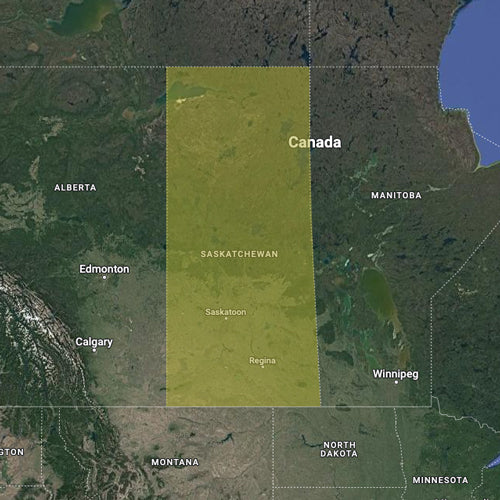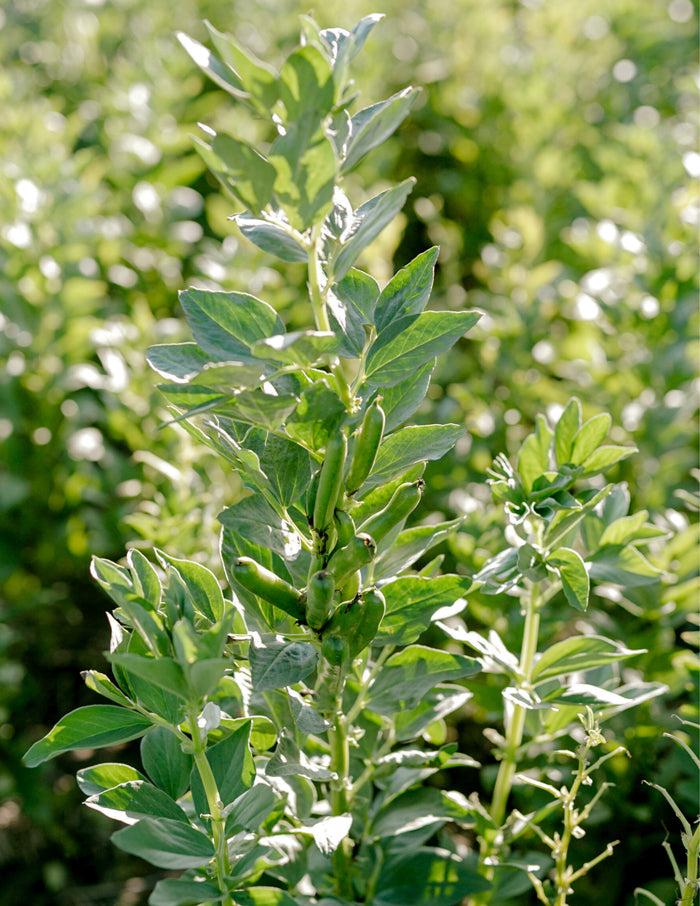What does 'Farm to Fork' mean?
Farm to Fork is a movement focused on connecting consumers with all stages of food production - from growing, to harvesting to processing to consuming. At Three Farmers, we strive to provide this personal connection between our farmers and our customers by implementing traceability. Rather than just making a claim on the label, we want to show our customers where their food came from and what the process was in creating it. We want everyone to take a front row seat in the creation of their food and be able to reach us with the questions that they have about its production. That’s why we have made it possible to simply enter your product code and find out exactly who made your Three Farmers product and where.
Zesty Cheddar Fava Beans (585g)
How they're grown...
Fava beans are a wonder crop as they are the most efficient nitrogen fixer of the pulse crops grown in Western Canada. They can fix (add nitrogen back to the soil) upwards of 90% of their own nitrogen requirements which means improved soil health for next year’s crop.
Fava beans can be seeded very early in the spring, giving farmers the ability to spread the workload during seeding. Seedlings are capable of withstanding temperatures as low as -3 degrees Celsius. They also prefer a bit of moisture, unlike our other pulses in our portfolio, and adapt best to moist agriculture areas of Saskatchewan and Manitoba. Fava beans mature in 110 to 130 days and as they mature, the lower leaves darken and drop, and the bottom pods dry from the bottom to the top of the plant. Each pod contains three to four seeds. Generally, around the last week of August, the fava beans are ready for harvest.
How they're made...
Once they are harvested at our partner farm, Prairie Fava, they are sent to our partners remove pods, rocks, dirt, weeds and any other materials from the harvesting to ensure we receive top graded ingredients into our facility.
The fava beans are then sent to our 15,000 square foot facility in Saskatoon where the journey from farm to table begins.
From there we move into the roasting process, utilizing our custom-made roasters and equipment. We choose to dry roast (never fry!) our fava beans — creating air pockets that result in an airy, bold crunch. Doing so not only maintains the nutritional integrity of each ingredient but creates the highest quality, most delicious product possible.
Next, we take our delicious seasoning formulations and coat the freshly roasted fava beans. These are then packaged, boxed, and warehoused in-house for distribution – ready for our amazing customers!
We take pride in providing Canadian grown products that taste good and are good for you. Thank you for taking the time to trace the journey of your snacks — from our farms to your table.
Did you know?
Fava Beans, also known as Faba Beans or Broad Beans, are not new to Western Canada. Commercial production began in 1972 with Manitoba taking the lead in the production of these magical beans. The Canadian Grown Fava Beans, sourced for our delicious snack lines, are unique from the varieties you may see in other snacks / foods. Currently, China is the largest producer of fava beans followed by Australia, but our Western Canada variety are unique in their shape – more edamame bean shaped versus the very broad and large imported alternatives- and quite nutty and fun in flavor, crunch and color. And, let us not forget to celebrate the obvious... they are grown in our prairie provinces by our hardworking Canadian Farmers!



